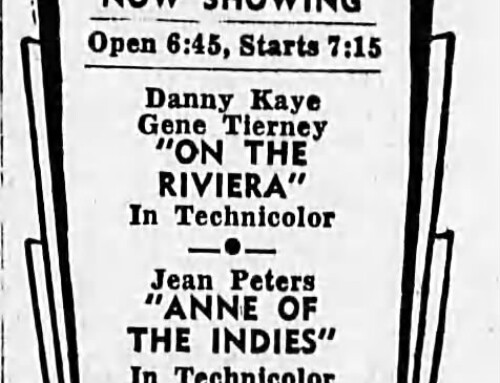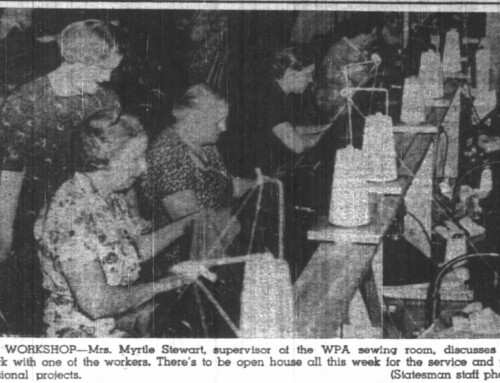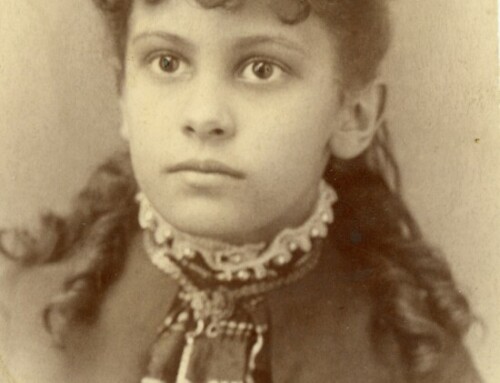Movies Got a Slow Start in Salem
Movie culture didn’t take off right away in Salem, it evolved slowly through pop up venues, carnival attractions and the vaudeville circuit.
Salem appears to have gotten its first taste of motion pictures in February of 1895, when a Kinetoscope was put on display at 211 Commercial St. in a building that was used as part C.H. Lane’s Tailor Shop and part Billiard Hall.[1] Just a note that the numbering system on Salem streets was a bit different in 1895, th building was located on the west side of Commercial between Ferry and State Streets, about where the Dehn Bar is located today. I’m betting the device was in the Billiard Hall, although the paper doesn’t specify. The original reporting by the Oregon Statesman gives a good a summary of the new invention: “It is a mechanical device, run by electricity, and the films or photographs are run past the eye at the rate of forty-six photographs per second, showing every motion as quick as a person can see it in reality.”[2] While the article and Edison himself claimed credit for the invention, as with so many of “wizard of electricity’s” inventions, this was probably more of a group effort.[3]
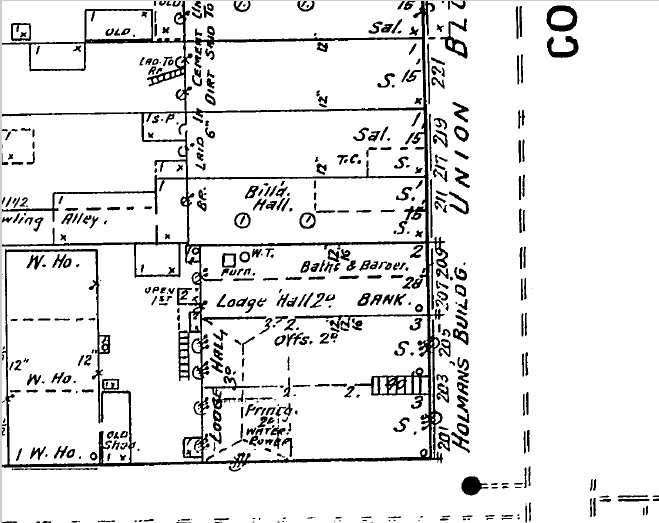
1895 Sanborn Fire Insurance map showing the NW corner of Commercial and Ferry Streets in Salem. 211 Commercial Street (where the Kinetoscope was said to have been on display) is listed here as a Billiards Parlor.
Despite the novelty of this invention, the marketability was limited. Films were only viewable by one person at a time standing next to the cabinet and looking through an eye piece. Projection was the next big hurdle. While not the first to come up with a practical projection machine for motion pictures, it was the Edison Company’s Vitascope that would make its debut in Salem at the Reed Opera House in 1897. For a mere 25-50 cents you could see the “latest marvel of the age…The actual motion of the muscles of the body, breathing and heaving of the chest, movements of the hair is actually and perfectly shown.” One assumes the body, breathing and hair was that of Cissy Fitzgerald – a famous vaudeville star—known for her skirt dancing whose film, along with the images of water scenes, a watermelon eating match and a great fire were featured at the screening.[4] At least one of the films was in color, and so lifelike that one newspaper reported upon viewing “the water scenes where the surf comes rolling in upon the beach, first row occupants have been seen to duck their heads in anticipation of getting wet. It simply baffles all analysis.”[5]
Motion picture viewings would continue to show up in carnivals and other special events. One July 1903 carnival featured an Electric Theater with a 15-foot square screen on which people could watch “acts.” The theater was snuggled between, Professor Horne’s live dog show, a Ferris wheel, and “Vervolin the ventriloquist.”[6]
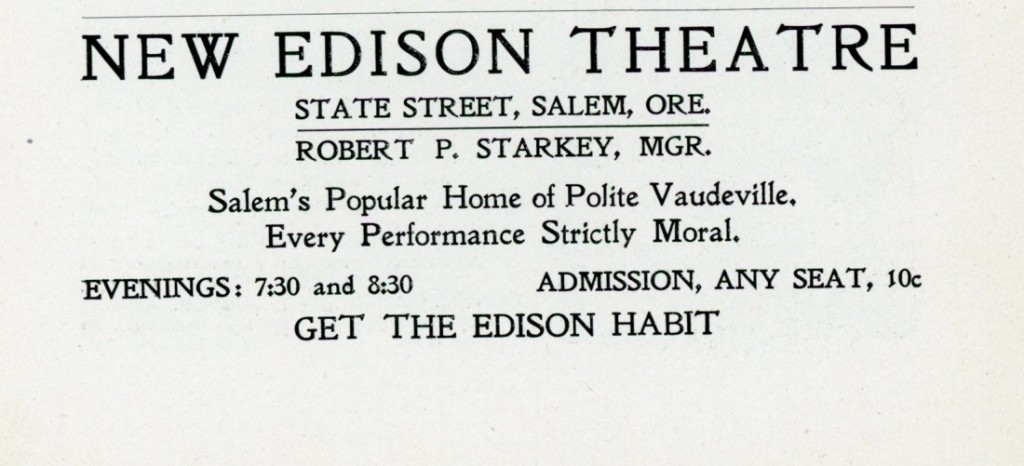
Advertisement for the New Edison Theater as it appeared in the March 1905 edition of the Salem High School Clarion Magazine. WHC Collections 0083.001.0010.004.
Eventually motion pictures became a staple of Salem’s Vaudeville circuit, where they were shared the stage with travelling comedians, singing babies, dog circuses, ventriloquists, magicians, contortionists and my favorite – the unassumingly named “’Keith’ the piano wizard.” [7] The New Edison Theater, started in about 1904, appears to be the first theater to adopt the new technology which they billed as “life motion pictures” on an “Edison-o-scope.” Charging a 10-cent admission, the theater suggested patrons “come early and avoid the rush.”[8]
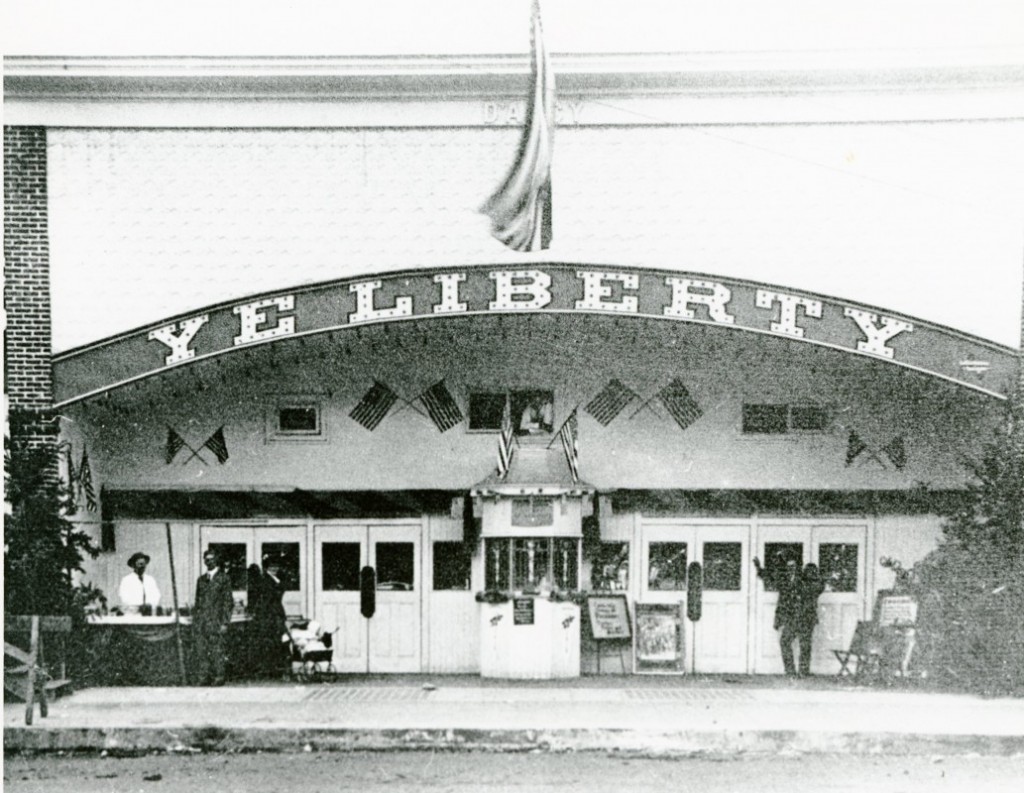
Ye Liberty Theater, Salem. Willamette Heritage Center Collections 1998.008.0019.
The Ye Liberty Theater became the first dedicated motion picture house in Salem in 1908, although the theater was often rented out for non-movie events like dairy conventions and illustrated art lectures. The theater was located, maybe not surprisingly, on Liberty Street, on the east side between State and Court Streets. The theater featured French equipment the paper dubs a “Gaumont Crophone” which consisted of a projector mechanically connected to a phonograph so that talking pictures could be displayed. Ironically, the opening of the theater had to be delayed because they couldn’t work up enough “juice” to power the equipment. It should be noted that the programming at this early theater was quite different than what we experience today. Shows consisted of “five or six moving picture films, an illustrated song and three of the talking picture films.”[9]
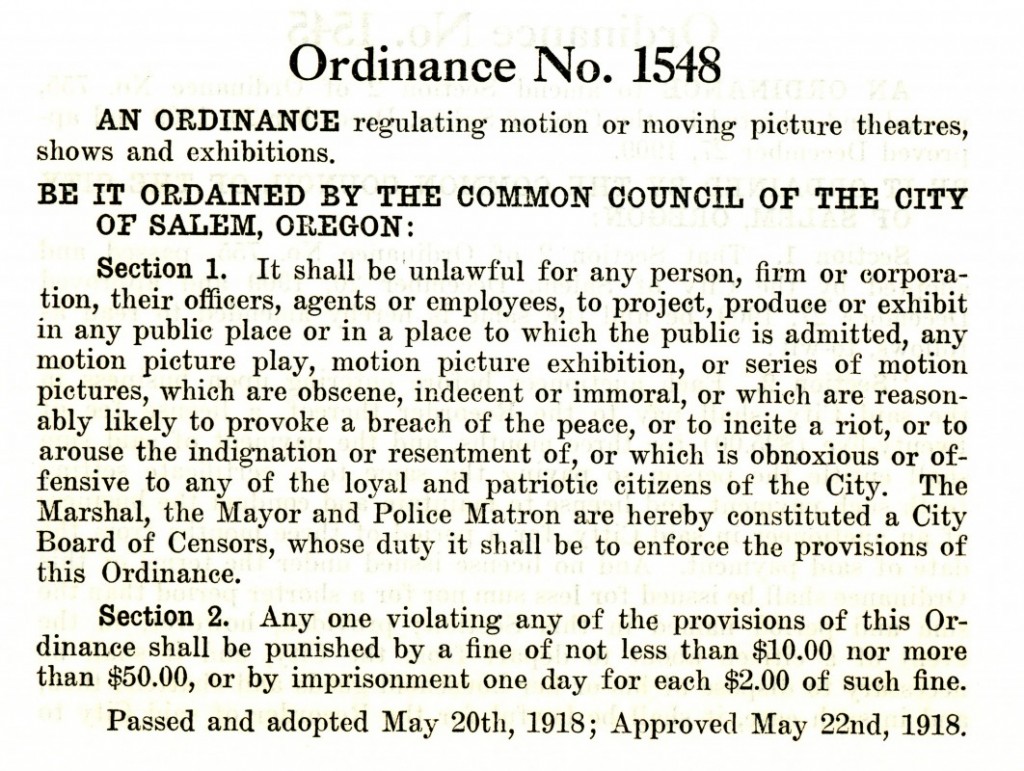
City Ordinance as found in booklet belonging to Elmer Daue. Daue Family Collection, Willamette Heritage Center, 0082.007.0021.029.
The rise of movie culture also brought concerns about the morality of entertainment. Theaters were quick to advertise the wholesomeness and refinement of their offerings. The New Edison Theater claimed that every performance was “strictly moral.” As the number of theaters grew, Salem even passed a city ordinance to help regulate the content of movies being shown. Ordinance No. 1548, approved May 22nd, 1918, stated that “It shall be unlawful for any person, firm or corporation…to project, produce or exhibit in any public place or in a place to which the public is admitted, any motion picture play, motion picture exhibition, or series of motion pictures, which are obscene, indecent or immoral, or which are reasonably likely to provoke a breach of the peace, or to incite a riot, or to arouse the indignation or resentment of, or which is obnoxious or offensive to any of the loyal and patriotic citizens of the City.” The ordinance goes on to name the City Marshal, Mayor and Police Matron as a “Board of Censors” to oversee implementation of the ordinance and authorized a fine of between 10 – 15 dollars, or a day of imprisonment served in lieu of each 2.00 of the fine.[10] It is interesting to speculate what might have incited the passing of this new ordinance, especially as it came at the height of U.S. involvement in WWI. To date, I have found no evidence of movies inciting any riots.
Cited Sources
[1] Newspaper searches for the address 211 Commercial Street from 1894-1895 pop up with C.H. Lane, Merchant Tailor listed at the address. However, the 1895 Sanborn map shows a building at that address with an interior wood partition and two storefronts. The larger portion of the building is labelled “Bill’d Hall.”
[2] “Wonderful Work.” Oregon Statesman 21 Feb 1895, pg 4.
[3] Read more about the development of the Kinetoscope here: https://en.wikipedia.org/wiki/Kinetoscope.
[4] “Edison’s Electric Vitascope” Capital Journal 13 Feb 1897, pg 1. “The Edison Vitascope” Oregon Statesman 14 Feb 1897, pg 1.
[5] “Edison’s Electric Vitascope” Capital Journal 13 Feb 1897, pg 1.
[6] “Salem is All There.” Capital Journal 1 Jul 1903. “The Electric Theater, where the acts are depicted on a 15-foot square screen is unique and interesting.”
[7]Advertisement. Oregon Statesman 2 Dec 1904, pg 5.
[8]Advertisement. Oregon Statesman 2 Dec 1904, pg 5.
[9] Electric Current was not strong enough. Oregon Statesman 11 September 1908, pg 4.
[10] Salem City Code. WHC Collections 0082.007.0021.029.
Transcribed Articles
“Electric Current was not strong Enough” Oregon Statesman 11 Sept 1908 pg 4
1000 people at opening of ye liberty theater but were disappointed. Pictures could not be shown on account of Lack of Juice to Run the big picture machines—opening will be held Saturday Night without fail. New Building is very attractive.
Nearly one thousand people were disappointed last night through the failure of the electric current at the new Ye Liberty theater in the D’arcy building on Liberty street.
Last night was the time set for the opening of this house and the management had everything in readiness, but in spite of the fact that the electric company had provided three transformers and the theatre people had installed an expensive generator, the supply was not sufficient to operate the modern picture machines that have been secured for this house. After fuses had been blown out, the attempt was given up for the evening, and the incandescent current was turned on and the doors thrown open to allow all who would inspect the theater, while the management entertained them with orchestra music and a number of the latest selections on a magnificent phonograph, the finest ever heard in this city.
The new theatre is fitted up in the finest style, being practically fire-proof. The ceiling is of metal and the walls are covered with fireproof plaster. The picture machines are installed in a zinc lined room, and every effort made to provide a safe play house.
The picture machines are worthy of notice. The moving picture machine is one of the latest Gaumont Crophone machines, shipped direct from Paris, and is the most expensive machine of this kind on the coast. It not only shows the regular moving pictures, but is also able to throw on the screen the new animated talking pictures. This is done by means of an electrically controlled phonograph, so that while the operator is running the films (using a motor for that purpose instead of the old hand method) he starts up the phonograph, which repeats the words as the figures are shown in action on the screen. This is the best of these machines on the coast, and the fifth or sixth of them to be installed on the Pacific slope.
The manager of Ye Liberty is an experienced show man and has been very successful. The Salem house is one of a string he has opened or is about to open. The Theatres under his management are already open in…
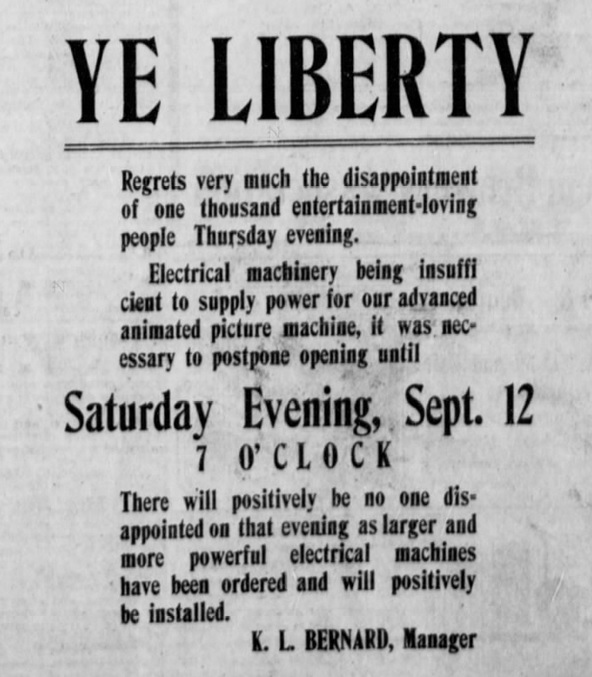
Advertisement appearing in the Oregon Statesman on September 11, 1908 apologizing for the botched opening.




